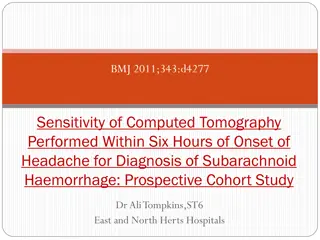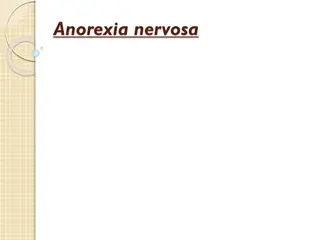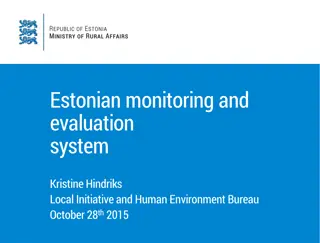
Antepartum Hemorrhage: Causes, Types, and Management
Gain knowledge on antepartum hemorrhage, including its definition, causes such as placenta previa and abruptio placentae, incidence, and etiology. Learn about complications, risk factors, and management strategies. Join Mrs. Justy Joy, Assistant Professor in OBG Department at Jubilee Mission College of Nursing, in exploring this critical obstetric issue.
Download Presentation

Please find below an Image/Link to download the presentation.
The content on the website is provided AS IS for your information and personal use only. It may not be sold, licensed, or shared on other websites without obtaining consent from the author. If you encounter any issues during the download, it is possible that the publisher has removed the file from their server.
You are allowed to download the files provided on this website for personal or commercial use, subject to the condition that they are used lawfully. All files are the property of their respective owners.
The content on the website is provided AS IS for your information and personal use only. It may not be sold, licensed, or shared on other websites without obtaining consent from the author.
E N D
Presentation Transcript
ANTE PARTUM HAEMORRHAGE MRS. JUSTY JOY ASSISTANT PROFESSOR OBG DEPARTMENT JUBILEE MISSION COLLEGE OF NURSING
Central objective At the end of teaching session the students will gain knowledge on antepartum hemorrhage and able to apply this knowledge into practice with a positive attitude Specific objectives The students will be able to Define antepartum haemorrhage Identify causes Describe types of placenta previa List down complications of placenta previa Define abruptio placenta Explain causes Describe clinical features and complications of abruptio placenta Describe management of abruptio placenta
DEFINITION Antepartum haemorrhage is defined as bleeding from or into the genital tract after 28thweek of pregnancy and before the birth of the baby . Incidence is 3 % among hospital deliveries
CAUSES PLACENTAL PLACENTA PREVIA ABRUPTO PLACENTA UNEXPLAINED----INDETERMINATE BLEEDING EXTRA PLACENTAL CERVICAL POLYP Ca CERVIX VARICOSE VEIN LOCAL TRAUMA
PLACENTA PREVIA DEFINITION It is defined as when placenta is implanted partially or completely in the lower uterine segment (over or adjacent to internal os) The term previa (L, in front of) denotes the position of the placenta in relation to the presenting part.
Incidence 0.5 to 1% Common in 80% occur in multipara More than 35 years is more common Multiple pregnancy High birth order
Etiology Dropping down theory Persistent chorionic activity Defective decidual theory Big surface area theory
(a) Multiparity (b) Increased maternal age (> 35 years) (c) History of previous cesarean section or any other scar in the uterus (myomectomy or hysterotomy) (d) Placental size (mentioned before) and abnormality (succenturiate lobes) (e) Smoking causes placental hypertrophy to compensate carbon monoxide induced hypoxemia. (f) Prior curettage.
TypeI (Low-lying) Type II (Marginal): The placenta reaches the margin of the internal os but does not cover it. Type III (Incomplete or partial central): The placenta covers the internal os partially (covers the internal os when closed but does not entirely do so when fully dilated). Type IV (Central or total): The placenta completely covers the internal os even after it is fully dilated.
PATHOLOGICAL ANATOMY Placenta The placenta may be large and thin, a tongue shaped extension from the main placental mass,extensive areas of degeneration with infarction and calcification may be evident. The placenta may be morbidly adherent due to poor decidua formation in the lower segment. Umbilical cord The cord may be attached to the margin (battledore) or into the membranes (velamentous) which may rupture along with rupture of the membranes. Lower uterine segment Due to increased vascularity, the lower uterine segment and the cervix becomes soft and more friable.
Causes of bleeding Placental growth Lower segment dilates Inelastic placenta Open uteroplacental vessels Causes of stop of bleeding Thrombosis Placental infraction Mechanical pressure Migration 18-20 weeks The term placental migration could be explained in two ways : (i) with the progressive increase in the length of lower uterine segment, the lower placental edge relocates away from the cervical os (ii) Due to trophotropism (growth of trophoblastic tissue towards the fundus), there is resolution of placenta previa.
CLINICAL MANIFESTATIONS Symptoms Signs Clinical features Painless recurrent bouls of bleeding Acute onset, painless, causeless and recurrent Warning hemorrhage First bleeding will be less and recurrent episodes will be more Usually during sleep and unassociated with activity General condition is proportional to blood loss The uterus feels relaxed, soft and elastic without blood loss Persistence of malpresentation Head floating Stallworthy sign Bleeding bright red Vaginal examination must not be done outside the operation theater
DIAGNOSIS History USG TAS:- The accuracy after 30th week of gestation is about 98 percent. False positive result may be due to full bladder or myometrial contractions. Poor imaging could be due to maternal obesity and posteriorly situated placenta. TVS: It is safe, obviates the discomfort of full bladder and is more accurate (virtually 100%) than TAS. Transperineal (TPS) Color Doppler flow study MRI - Quality of placental imaging is excellent Double set up examination - It is less frequently done these days Examination of placenta after delivery
COMPLICATION Ante Natal Shock, Malpresentations, Premature Labour, Death Intra Natal Early Rupture of Membrane, Cord Prolapse, Slow Dilatation Of Cervix, Intrapartum Haemorrhage, Increased Operative Delivery, Post partum haemorrhage & Retained placenta Post Natal Sepsis, Sub Involution, Embolism Fetal Low birth weight baby, Asphyxia, Intra Uterine Death, Birth injury & Congenital malformation
PREVENTION Adequate antenatal care to improve the health status Antenatal diagnosis of low lying placenta at 20 weeks with routine ultrasound Significance of warning hemorrhage should not be ignored. Color flow Doppler USG in placenta previa is indicated to detect any placenta accreta. AT HOME: (1) The patient is immediately put to bed (2) Assess the blood los (3) Quick but gentle abdominal examination to mark the height of the uterus (4) Vaginal examination must not be done. TRANSFER TO HOSPITAL: Arrangement is made to shift the patient to an equipped hospital having facilities of blood transfusion, emergency cesarean section and neonatal intensive care unit (NICU). ADMISSION TO HOSPITAL: All cases of APH, even if the bleeding is slight or absent by the time the patient reaches the hospital, should be admitted.
MANAGEMENT Immediate attention (1) Amount of the blood loss by noting the general condition, pallor, pulse rate and blood pressure (2) Blood samples are taken for group, cross matching and estimation of hemoglobin (3) A large-bore IV cannula is sited and an infusion of normal saline is started and compatible cross matched blood transfusion should be arranged (4) Gentle abdominal palpation to ascertain any uterine tenderness and auscultation to note the fetal heart rate (5) Inspection of the vulva to note the presence of any active bleeding.
Vital prerequisites: (1) Availability of blood for transfusion whenever required (2) Facilities for cesarean section should be available throughout 24 hours Selection of cases Mother is in good health status (hemoglobin > 10 g%; hematocrit > 30%) Duration of pregnancy is less than 37 weeks Active vaginal bleeding is absent Fetal well being is assured (USG).
EXPECTANT MANAGEMENT Bed rest with bathroom privileges Investigations like hemoglobin estimation, blood grouping and urine for protein are done Periodic inspection of the vulval pads and fetal surveillance with USG at interval of 2 3 weeks Supplementary hematinics should be given and the blood loss is replaced by adequate cross matched blood transfusion, if the patient is anemic When the patient is allowed out of the bed (2-3 days after the bleeding stops), a gentle speculum (Cusco s) examination is made to exclude local cervical and vaginal lesions for bleeding. Use of tocolysis (magnesium sulfate) can be done if vaginal bleeding is associated with uterine contractions Use of cervical circlage to reduce bleeding and to prolong pregnancy is not helpful Rh immunoglobin should be given to all Rh negative (unsensitized) women. 1. 2. 3. 4. 5. 6. 7. 8.
Hospital setting is ideal. Termination of the expectant treatment: The expectant treatment is carried up to 37 weeks of pregnancy. By this time, the baby becomes sufficiently mature. Steroid therapy is indicated when the duration of pregnancy is less than 34 weeks. Betamethasone reduces the risk of respiratory distress of the new born when preterm delivery is considered
Active management Bleeding occurs at or after 37 weeks Patient in labour Bleeding is continuing Baby is dead Cesarean section- is done for all women with sonographic evidence of placenta previa where placental edge is within 2 cm from the internal os. It is especially indicated if it is posterior or thick Vaginal examination - Placental edge is 2-3 cm away from internal os
GENERAL REMARKS ON CESAREAN SECTION The operation should be performed by a senior obstetrician with the help of an experienced senior anesthetist Choice of anesthesia must be made by the anesthetist. Regional blockage may be used If the patient is in shock state and the bleeding continues, the operation has to be performed immediately along with restorative measures. If, however, bleeding ceases, the operation may be deferred till the general condition improves with restorative measures Low transverse abdominal incision is to be avoided. Instead, an infraumbilical longitudinal incision is preferred which not only saves time but also facilitates the classical operation if it seems necessary
Precautions during vaginal delivery (1) All possible steps should be taken to restore the blood volume (2) Methergin 0.2 mg should be given intravenously with the delivery of anterior shoulder to prevent blood loss in third stage (3) Proper examination of the cervix should be done soon following delivery to detect any evidences of tear (4) Baby s blood hemoglobin level is to be checked and if necessary arrangements are to be made for blood transfusion.
PROGNOSIS MATERNAL: There has been a substantial reduction of maternal deaths in placenta previa throughout the globe. FETAL: The reduction in perinatal deaths is principally due to judicious extension of expectant treatment thereby reducing the loss from prematurity, liberal use of cesarean section which greatly lessens the loss from hypoxia and improvement in the neonatal care unit
NURSING MANAGEMENT Earlier diagnosis Assessment with gentle paplapation on abdomen Rest Advise for management in home Early interrvention Periodical check up Continuous fetal movement monitoring Support to mother and family Counselling
ABRUPTIO PLACENTA/ ACCIDENTAL HEMORRHAGE/ PREMATURE SEPARATION OF PLACENTA It is a form of APH where the bleeding occurs due to premature separation of a normally situated placenta. INCIDENCE o I in 200 delivery o Perinatal mortality is 15-20% o Maternal mortality is 2 5%
ABRUPTIO PLACENTA - TYPES CONCEALED REVEALED MIXED
Revealed : Following separation of the placenta, the blood insinuates downwards between the membranes and the decidua. Ultimately, the blood comes out of the cervical canal to be visible externally. This is the commonest type. Concealed : The blood collects behind the separated placenta or collected in between the membranes and decidua. The collected blood is prevented from coming out of the cervix by the presenting part which presses on the lower segment. At times, the blood may percolate into the amniotic sac after rupturing the membranes. In any of the circumstances blood is not visible outside. This type is rare. Mixed : In this type, some part of the blood collects inside (concealed) and a part is expelled out (revealed). Usually one variety predominates over the other. This is quite common.
ETIOLOGY Exact cause is unknown More seen in High birth order Advanced age Poor socio economic status Malnutrition Smoking hypertension in pregnancy Trauma Sudden uterine compression Short cord Supine hypotension syndrome Placental anomaly Sick placenta Uterine factors Sick placenta Folic acid deficiency Torsion of uterus Cocaine abuse Thrombophilia Prior abruption
PATHOGENESIS Depending on extension of abruption there may be degeneration and necrosis of decidua basalis Rupture of basal plate Hematoma at intervillous space Retro placental hematoma Depression on maternal surface and areas of infractions are visible Spiral arteries may rupture
COUVELAIRE UTERUS (UTERO PLACENTAL APOPLEXY)
COUVELAIRE UTERUS It is a pathological entity first described by Couvelaire and is met with in association with severe form of concealed abruptio placentae. There is massive intravasation of blood into the uterine musculature upto the serous coat. The condition can only be diagnosed on laparotomy.
CLASSIFICATION Grade 0 Grade I Grade II Grade III C/F are absent Vaginal bleeding Vaginal bleeding Vaginal bleeding is severe Uterus irritable & tenderness Uterus irritable & tenderness Uterus irritable & tenderness Maternal BP & fibrinogen unaffected Maternal BP increased & fibrinogen decreased shock is absent Shock coagulation defect and anuria FHS unaffected FHS unaffected Fetal distress or death Fetal death
CLINICAL FEATURES AND DIAGNOSIS Symptoms Pain Revealed Abdominal discomfort and pain Continuous dark colour Concealed Acute intense pain Bleeding Continuous dark colour or serous discharge Shock may pronounced General condition Proportionate Pallor Features of eclampsia Uterine height Related to blood loss Absent Severe Frequent association Proportion to GA More Uterine feel Normal feel Uterus is tense, tender & rigid Diffuse & usually absent Fetal parts, FHS Identifiable & present Urine output normal diminished
Symptoms Revealed Concealed Hb Low value and proportional Moderately lower & not in proportion Coagulation profile unchanged Clotting time increases & fibrinogen and platelet become low Urine for protein absent present
Complications. Proportion to amount of visible blood loss revealed Haemorrhage, Shock, Blood coagulation disorders PPH, oliguria, puerperal sepsis Failure of lactation concealed Fetal death Prematurity Anoxia fetal
PREVENTION Elimination of knowing factors Correction of anemia Prompt detection and hospitalization
MANAGEMENT & NURSING MANAGEMENT Emergency management Infusion Blood transfusion Coagulation profile Urine output Electronic fetal movement
Assessment Fetal status Grade of abruption Hb%, HCT& coagulation profile ABO & Rh group Depending on cervical condition and type of abruption CS or vaginal delivery can be decided
MANAGEMENT OPTIONS (a) Immediate delivery (b) Management of complications if there is any (c) Expectant management (rare) Definitive treatment is immediate delivery
The patient is in labor: The labor is accelerated by low rupture of the membranes. Rupture of the membranes with escape of liquor amnii accelerates labor and it increases the uterine tone also. Oxytocin drip may be started to accelerate labor when needed. Vaginal delivery is favored in cases with: (i) Limited placental abruption (ii) FHR tracing is reassuring (iii) Facilities for continuous (electronic) fetal monitoring is available (iv) Prospect of vaginal delivery is soon or (v) Placental abruption with a dead fetus.
The patient is not in labor: (i) Bleeding continues (ii) > Grade I abruption Delivery either by (A) Induction of labor or (B) Cesarean section. (A) Induction of labor is done by low rupture of membranes. Oxytocin may be added to expedite delivery. Labor usually starts soon in majority of cases and delivery is completed quickly (4-6 hours). Placenta with varying amount of retroplacental clot is expelled most often simultaneously with the delivery of the baby. Inj. oxytocin 10.IU IV (slow) or IM or Inj. methergin 0.2 mg IV is given with the delivery of the baby to minimise postpartum blood loss. Oxytocics should be used to improve the uterine tone along with blood transfusion.
(B) Cesarean section: Indications are : (a) Severe abruption with live fetus (b) Amniotomy could not be done (unfavorable cervix) (c) Prospect of immediate vaginal delivery despite amniotomy is remote (d) Amniotomy failed to control bleeding (e) Amniotomy failed to arrest the process of abruption (rising fundal height) (f) Appearance of adverse features (fetal distress, falling fibrinogen level, oliguria). Anesthesia during cesarean section: Regional anesthesia is generally avoided when there is significant hemorrhage. This is to avoid profound and persistent hypotension
EXPECTANT MANAGEMENT Expectant management in a case of placental abruption is an exception and not the rule. Cases where bleeding is slight and has stopped (Grade I abruption), fetus reactive (CTG) and remote from term, may be considered. The goal of expectant management is to prolong the pregnancy with the hope of improving fetal maturity and survival. Continuous electronic fetal monitoring is maintained. Patient should be observed in the labor ward for 24-48 hours to ensure that no further placental separation is occurring. Corticosteroid has to be given if preterm
INDETERMINATE BLEEDING The exact cause of vaginal bleeding in late pregnancy is not clearly understood in few cases. The diagnosis of unclassified bleeding should be made after exclusion of placenta previa, placental abruption and local causes Rupture of vasa previa, marginal sinus hemorrhage, circumvallate placenta, marked decidual reaction on endocervix or excessive show may be a possible cause of such bleeding.






















